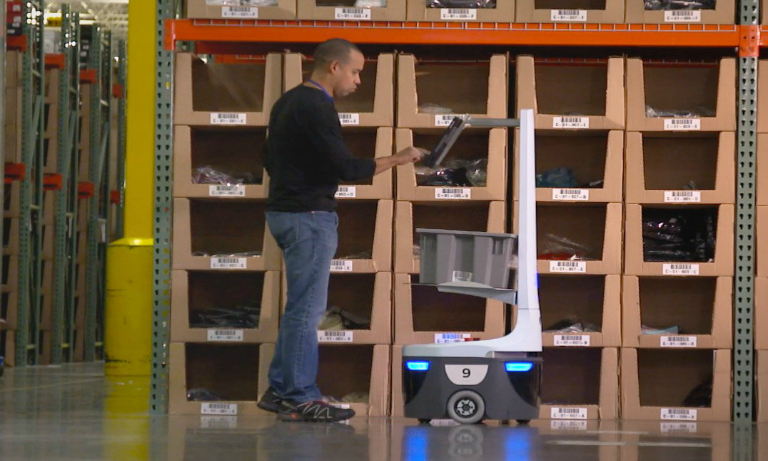 The human brain is limited and, as humans, we don’t always make the best decision
The human brain is limited and, as humans, we don’t always make the best decisionBusinesses are evolving into technology-enabled enterprises at a faster pace than ever, thanks to the rapid advancement in the technology sector. Naturally, today’s entrepreneurs and company directors should be investigating how they can use this to their advantage and to improve their business operations.
Klaus-Michael Vogelberg, Chief Technology Officer of Sage Group, highlighted his 6 key trends for Forbes, as to how he sees global technology trends driving these SMBs toward adopting a fundamentally different approach to work in 2017 and beyond.
Trend #1: Autonomous interfaces and chatbots will become independent and learn
These tech tools are becoming increasingly common on different devices and user interfaces which entrepreneurs use to manage and control their businesses. The introduction of these tools will dramatically change the way that humans and computers work and interact with each other. While people presently use a keyboard or mouse to interact with their PCs, they will increasingly start talking with their systems or using gesture control such as hand, head or eye gestures to conduct the same interactions.
The user experience will become both more convenient and enjoyable. On the backend, these systems will work autonomously and come with ever-improving self-learning capabilities. Eventually, software will be able to act without user intervention – or even ask a certain question only once and use this information for every subsequent activity.
Trend #2: Artificial and collective intelligence will motivate businesses to share data
Companies need to continue to learn and to be able to extract knowledge from today’s wealth of data. They should consider enlisting artificial and collective intelligence to handle mushrooming volumes of information being generated by all sorts of affordable and powerful sensors, devices and intelligent agents. SMBs should perhaps join forces and – while considering their corporate data protection policies and personal rights laws – share, for example, computer power and data with other companies in a structured and systematic manner.
This will only be in their best interests and they could even profit from doing so. Similar to crowdsourcing mechanisms, an enriched data pool would enable businesses to better understand how their customers behave, what they need, what to offer them and which business functions to focus on for increased investment.
Trend #3: Blockchain will create trust in the digital age
Blockchain is a decentralised, distributed ledger – essentially an asset database shared across multiple geographies. It organises transactions of digital assets between two parties in a radically new way. All participants of a blockchain (so called nodes) have access to the distributed ledger, which contains an inventory of all the relevant digital assets. All parties within this network have their own identical copy of the ledger. Any changes to it are applied to every copy in a matter of minutes or even seconds.
Thus, the system is incredibly transparent and creates trust among everyone involved. This tool works brilliantly for those who work in industries that serve as intermediaries between two parties – such as lawyers, notaries, or real-estate or financial brokers. Bookkeepers and accountants might also be affected in the way they do business in the future. Once implemented, blockchain has the potential to eliminate a significant portion of the workload – such as checking and booking transactions, transferring money or paying invoices, all commonly handled by these professions today.
Trend #4: The movement of money will be revolutionised
This is an area which has already seen significant change with the introduction of in-app payment solutions, like Apple Pay and Square Cash, which enable users to effortlessly make one-click payments and purchase goods using mobile devices or websites. However, on the backend, complex transactions running through systems, such as accounting software, are less user-friendly and less integrated.
For example, companies currently have almost no ability to make one-click invoice payments or easily manage their financial transactions between partners, suppliers and their bank with one touch of a screen or mouse. This is all set to change in the future with new solutions coming to the fore.
Trend #5: Platform-based infrastructure will be democratised
As the technology becomes more accessible and affordable, more SMBs will decide to replace their stand-alone, on-site software systems with integrated, cloud-based software solutions that operate on global cloud platforms. Platforms such as Salesforce.com which offer access to a wealth of business apps and integrated services. Additionally, companies will also benefit from mobile app platforms such as the one operated by the Apple Mobility Partner Program.
These kind of platforms give smaller businesses the opportunity to access innovative business software solutions and services which they wouldn’t have been able to afford five years ago. These tools allow business builders to discover new ways of working and give them the infrastructure needed to receive every kind of data from partners or the Internet of Things, analyse it, and then personalise it to create something new and productive.
Trend #6: Internet of Things will create new job profiles and services
The Internet of Things presents new opportunities for SMBs to connect their businesses to the information flowing through an increasing number of smart things. Multiple data streams originating from sensors built into consumer goods, machines, cars, clothes or even human beings (for medical monitoring purposes, for example) will result in a fantastic treasure trove of data. Ultimately, IoT will lead to the creation of new, superior customer experiences.
In summary
Every business will need to start thinking of itself as a technology business in 2017 and into the future too. SMBs will need to grasp the opportunities that this development brings with it and change almost every aspect of today’s more or less traditional ways of working to stay competitive. The good news is that admin could be totally eliminated, replaced by technology which is used as easily as messaging a friend, or totally automated by machines. This will empower entrepreneurs to stay focused on what they’re good at – building their businesses, driving growth in the economy and contributing to their communities – and leave basic administrative tasks to technology.
Join Over 40,000 Recruiters. Get our latest articles weekly, all FREE – SEND ME ARTICLES
Recruiters love this COMPLETE set of Accredited Recruitment & HR Training – View Training Brochure








